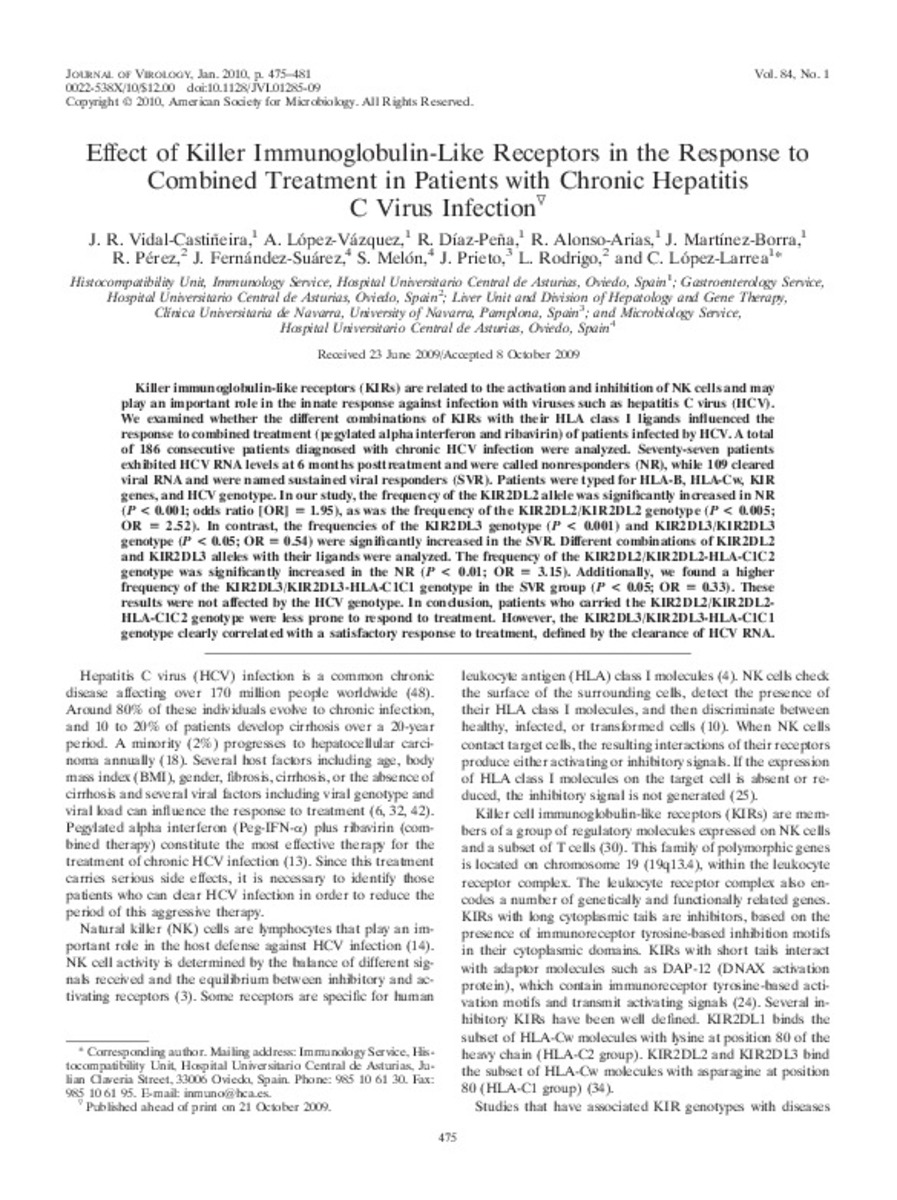Effect of killer immunoglobulin-like receptors in the response to combined treatment in patients with chronic hepatitis C virus infection
Keywords:
Receptors, KIR
Hepatitis C
Humans
Treatment outcome
Publisher:
American Society for Microbiology
Citation:
Vidal-Castiñeira JR, López-Vázquez A, Díaz-Peña R, Alonso-Arias R, Martínez-Borra J, Pérez R, et al. Effect of killer immunoglobulin-like receptors in the response to combined treatment in patients with chronic hepatitis C virus infection. J Virol. 2010 Jan;84(1):475-481
Statistics and impact
0 citas en

0 citas en

Items in Dadun are protected by copyright, with all rights reserved, unless otherwise indicated.







